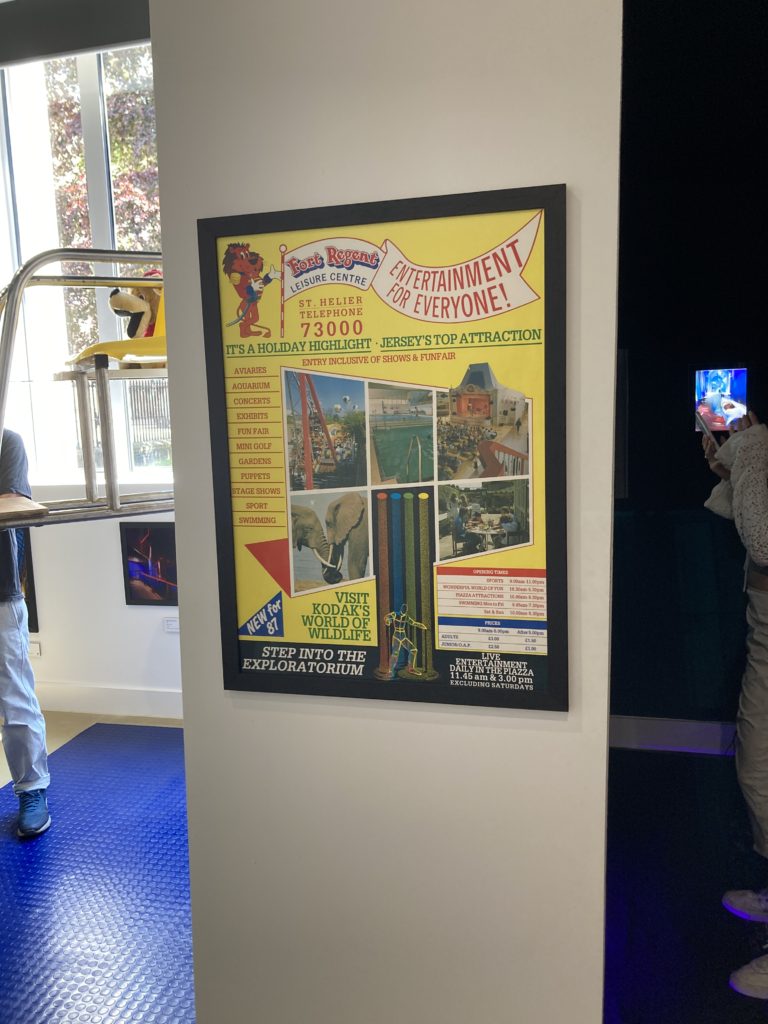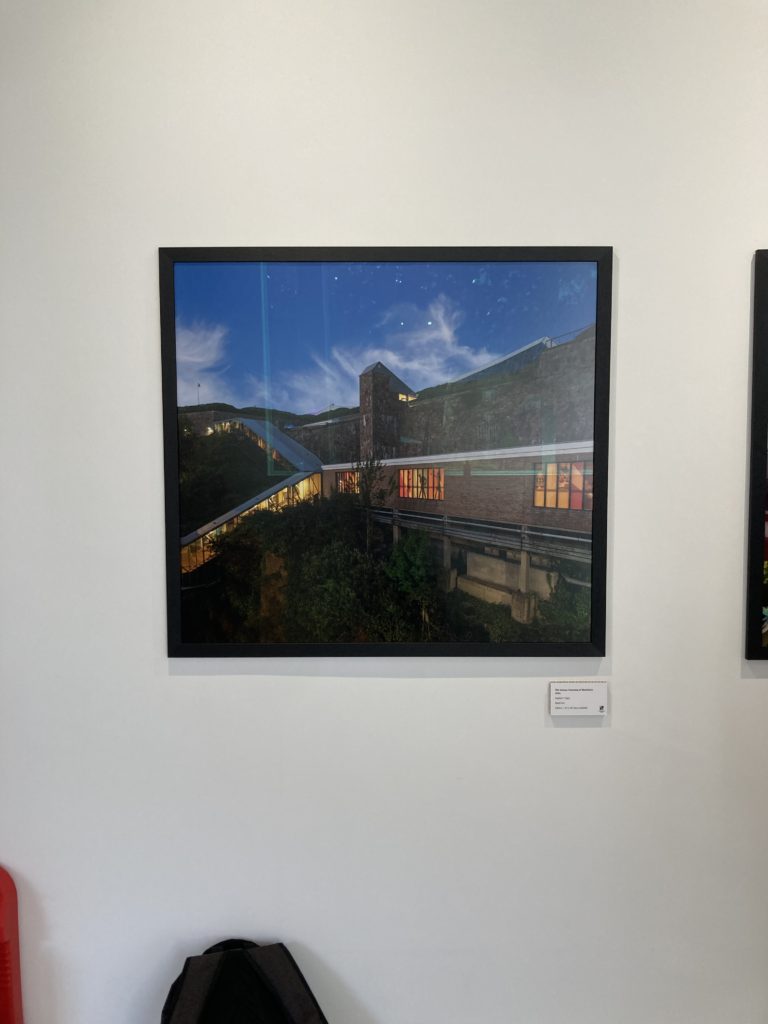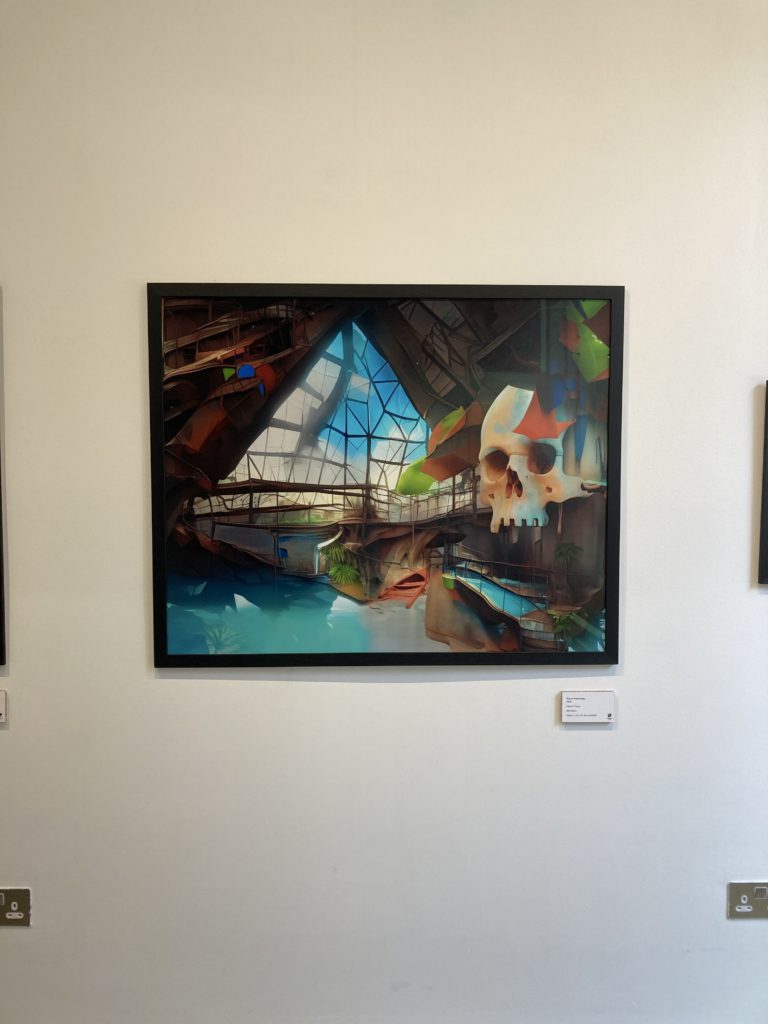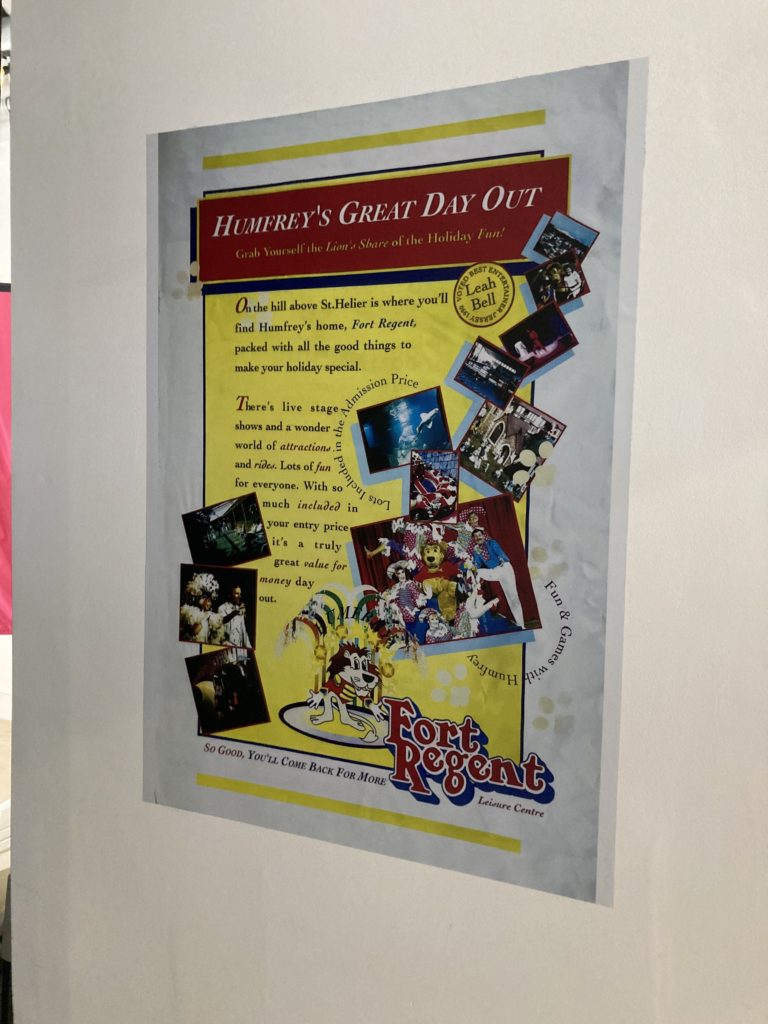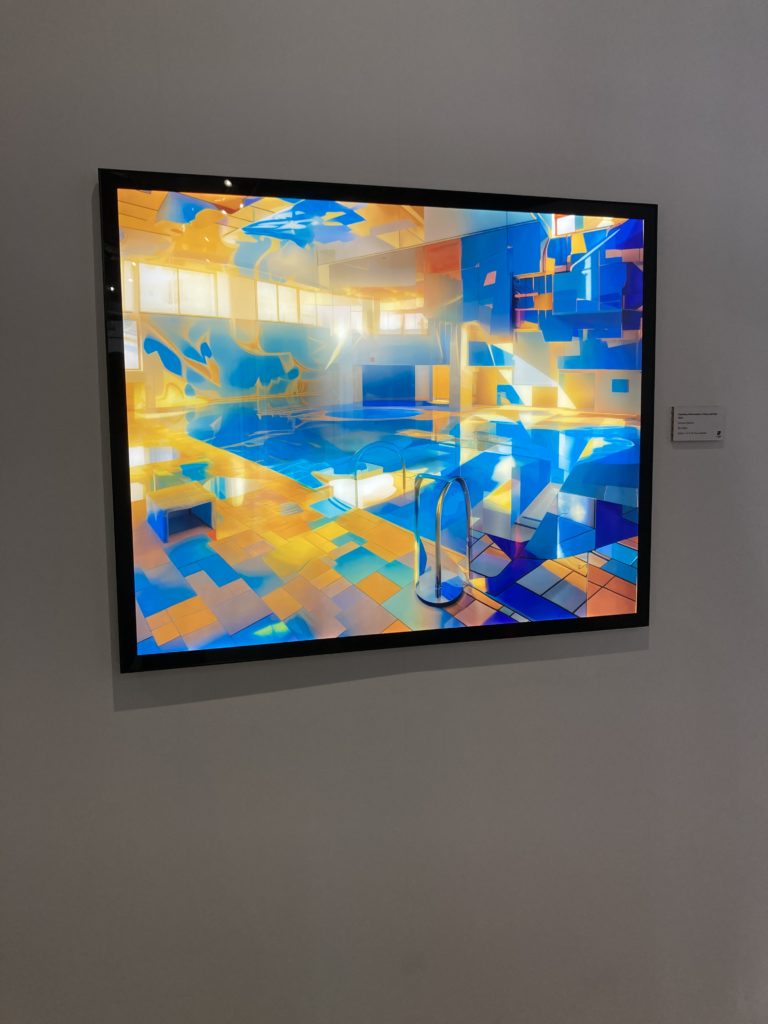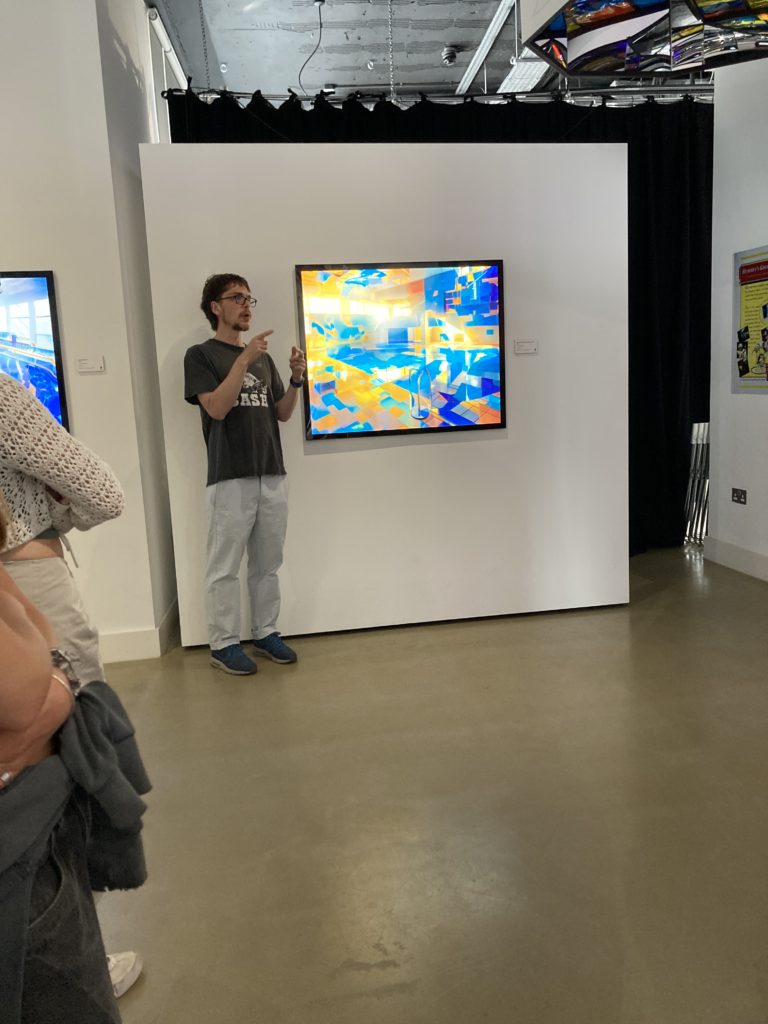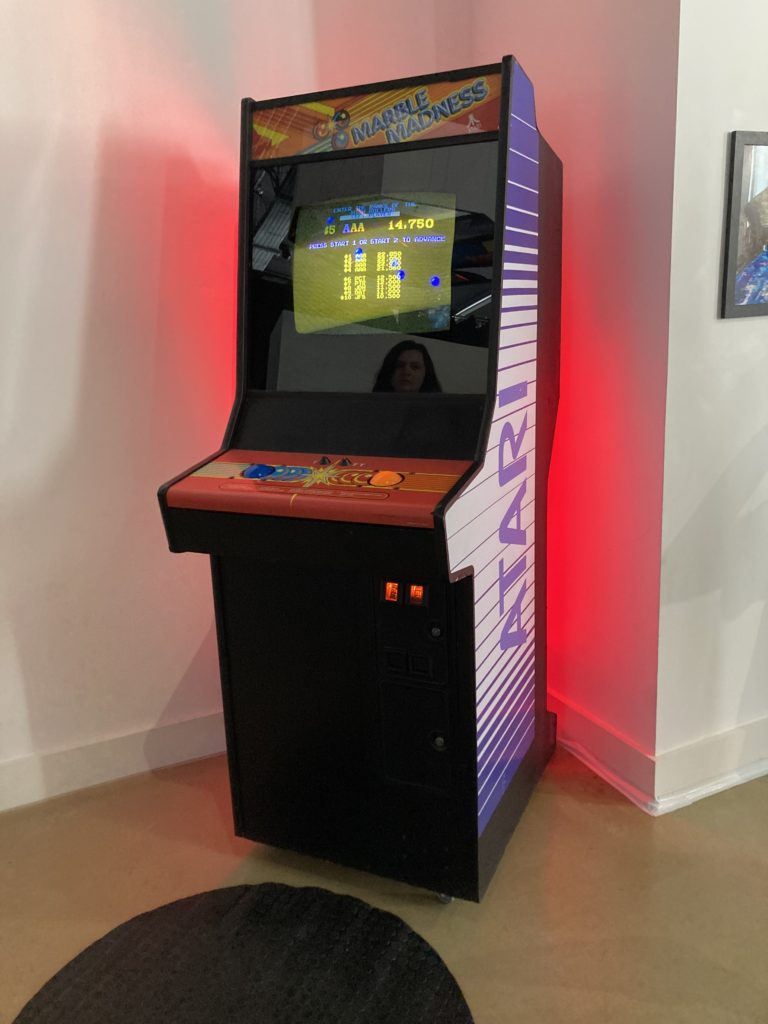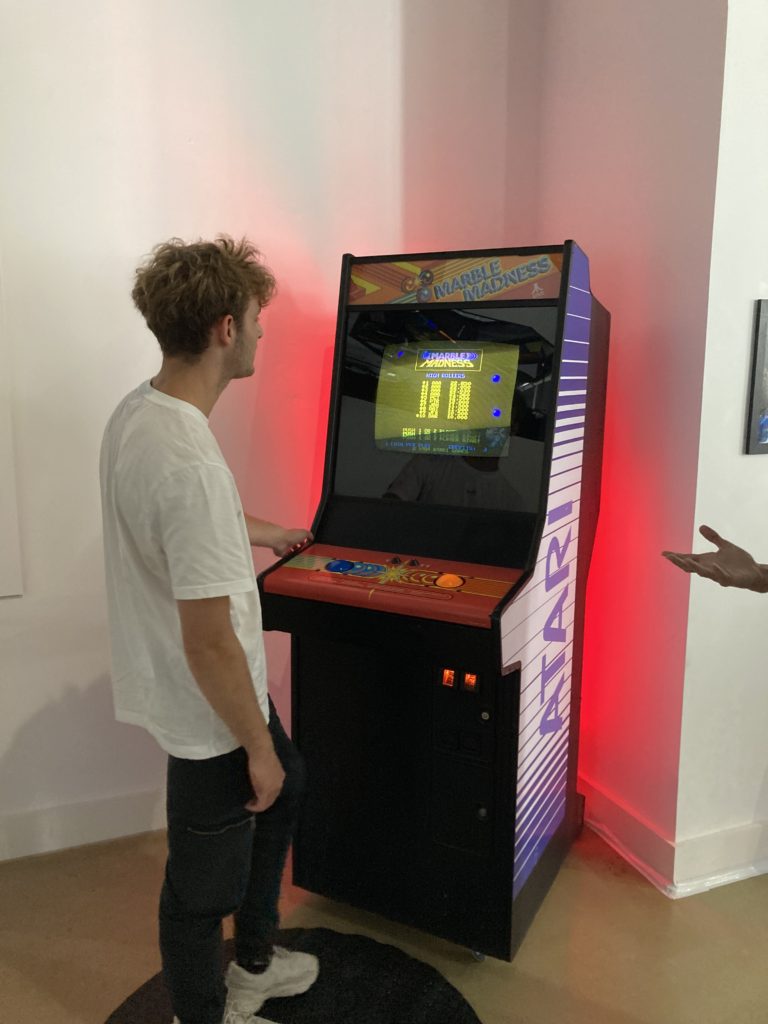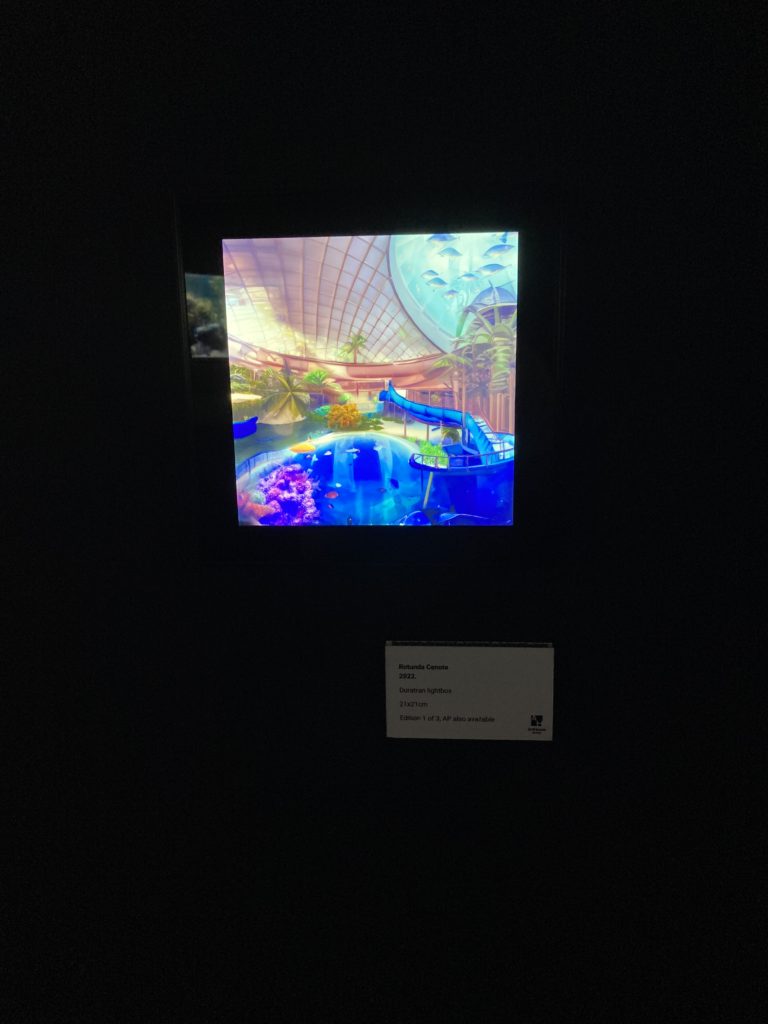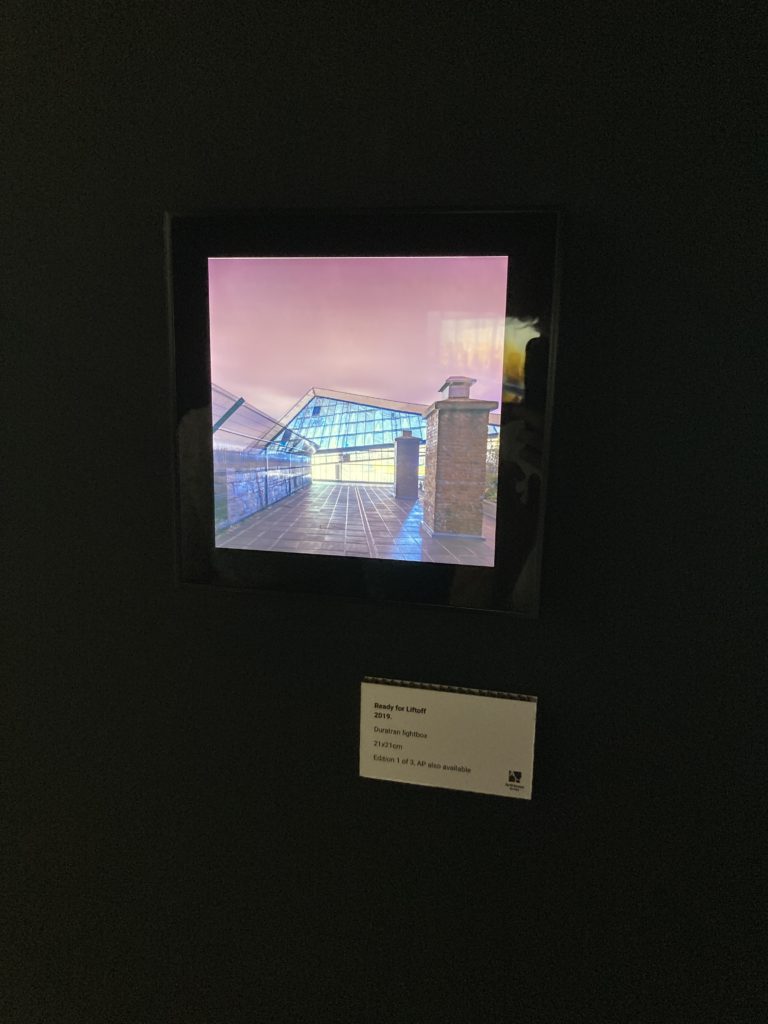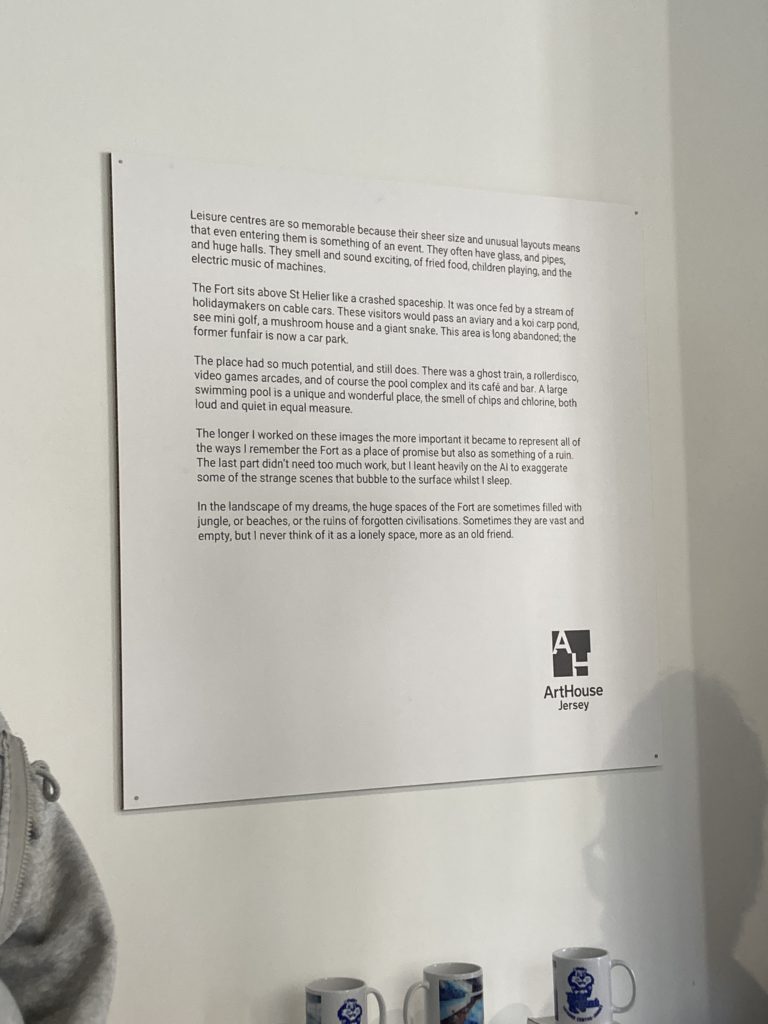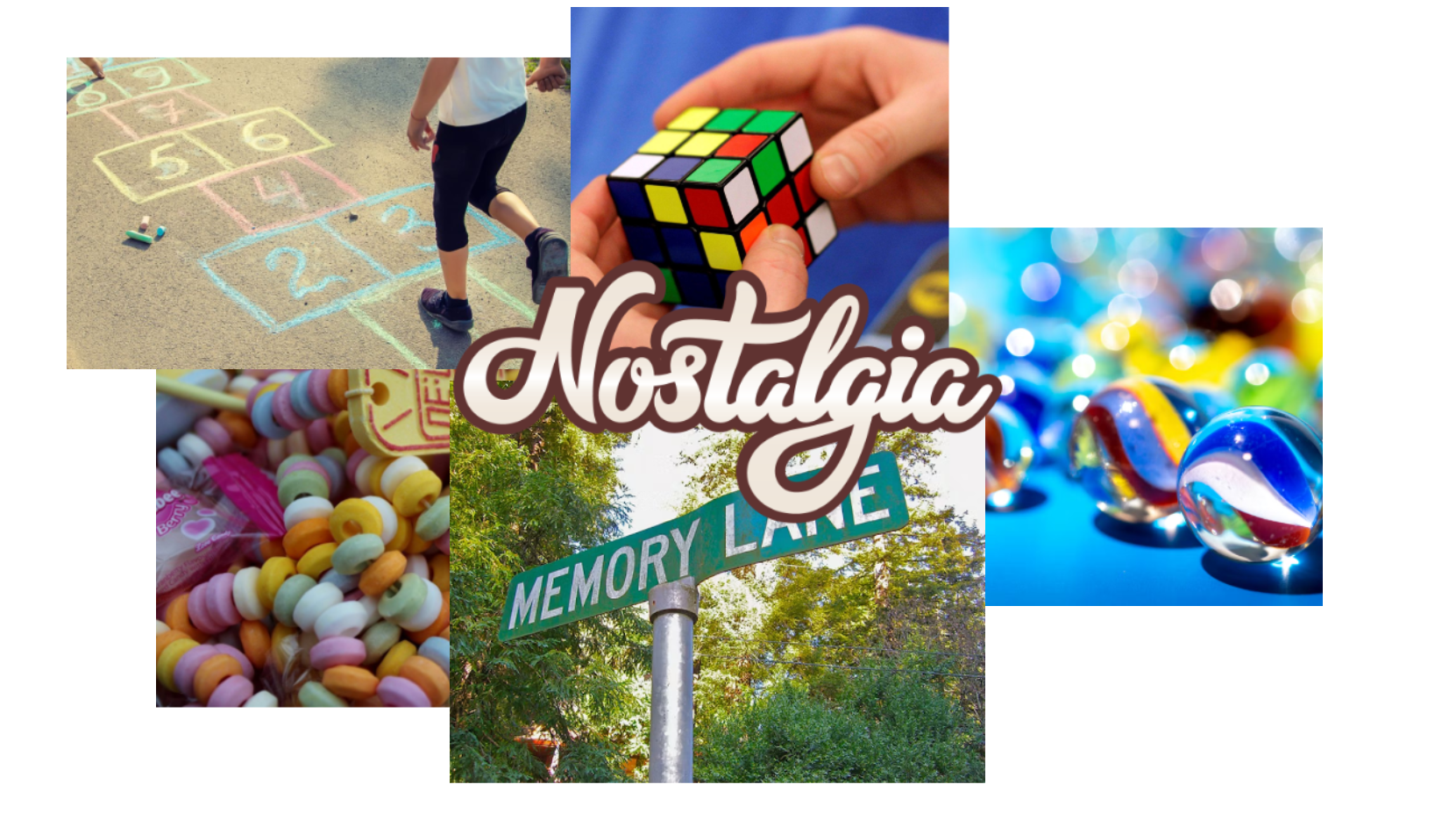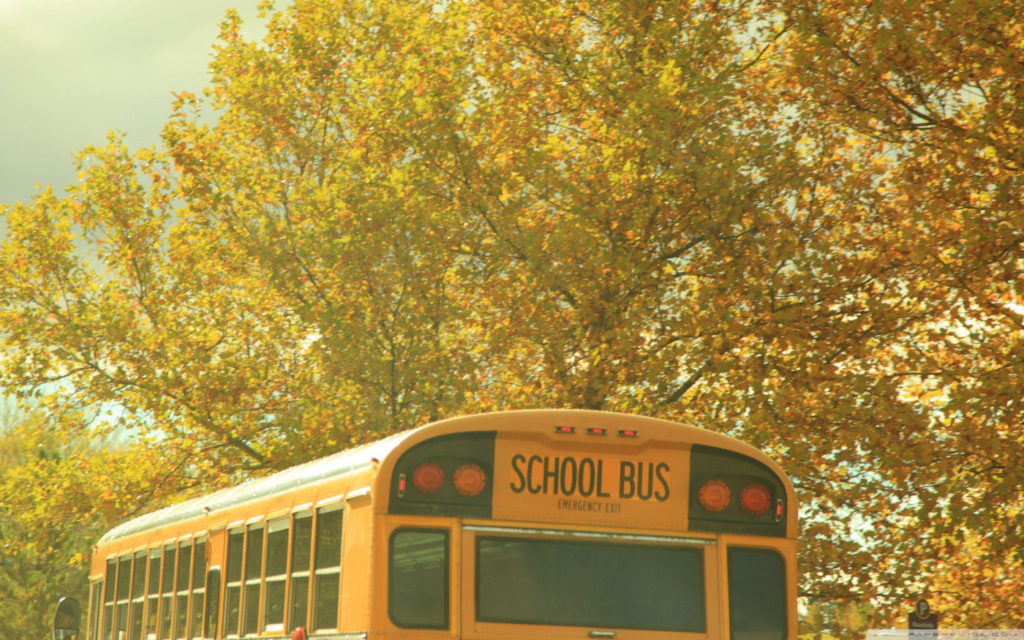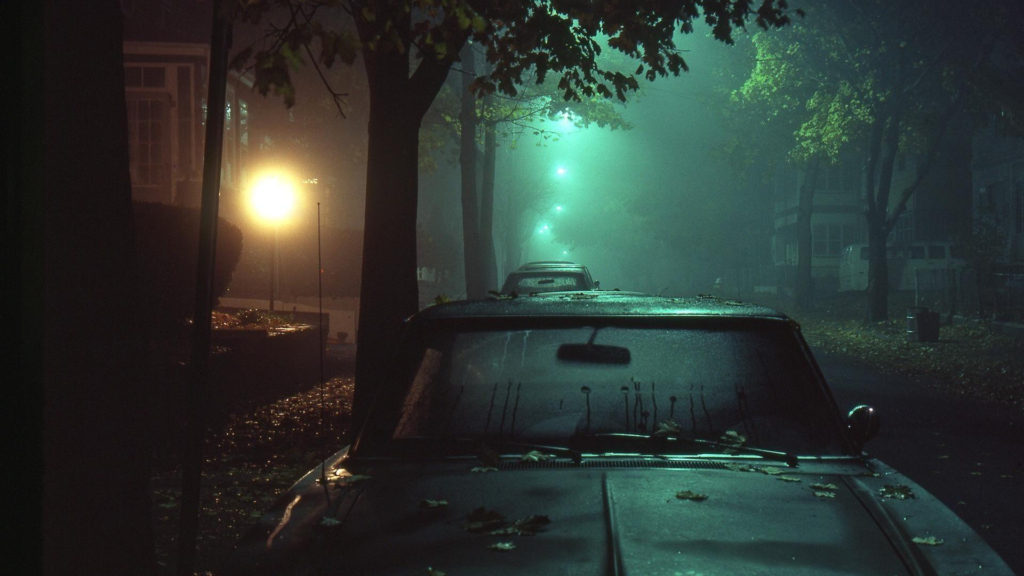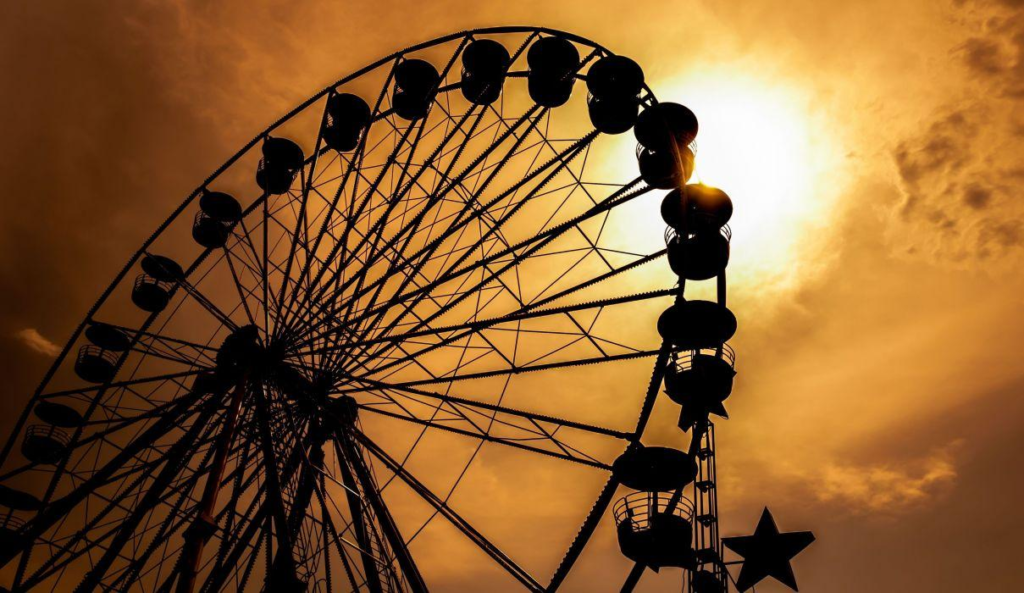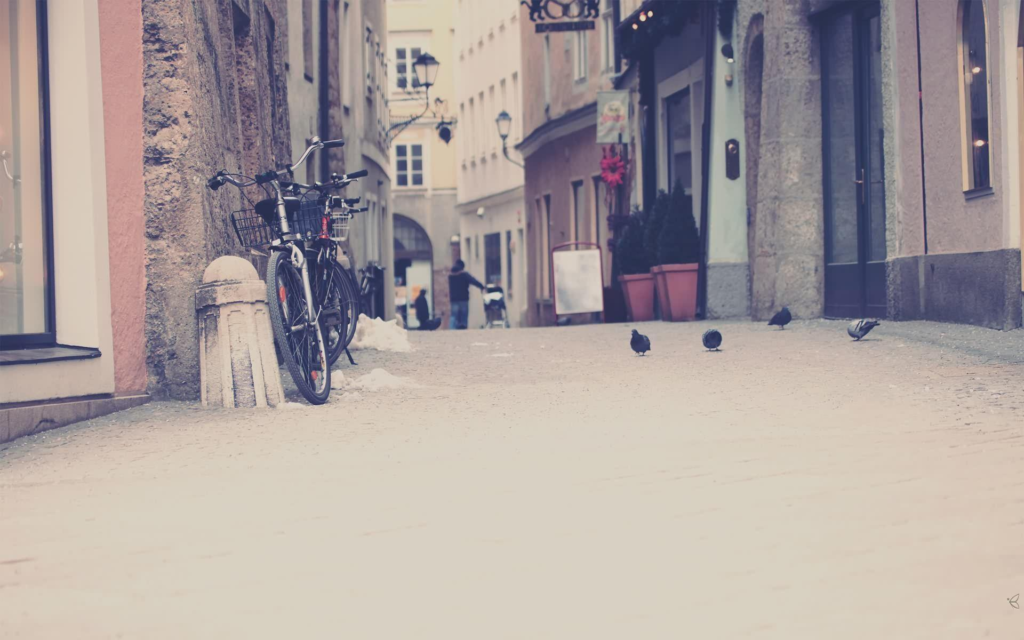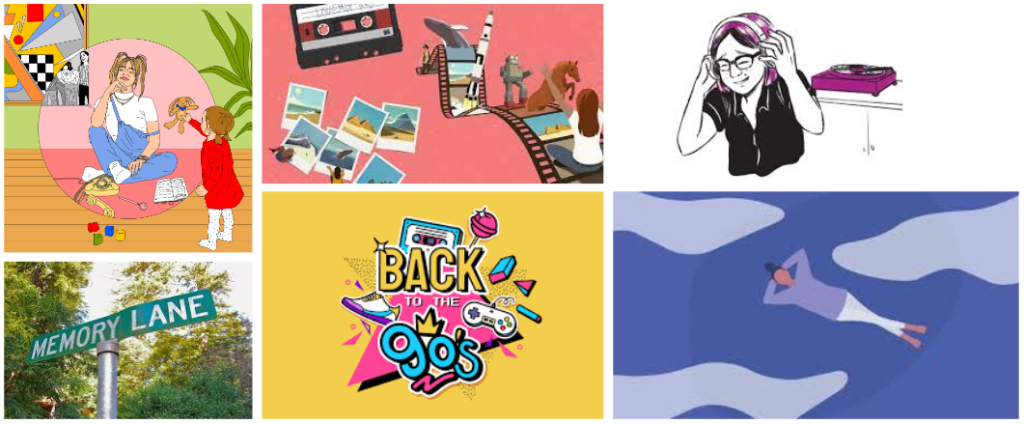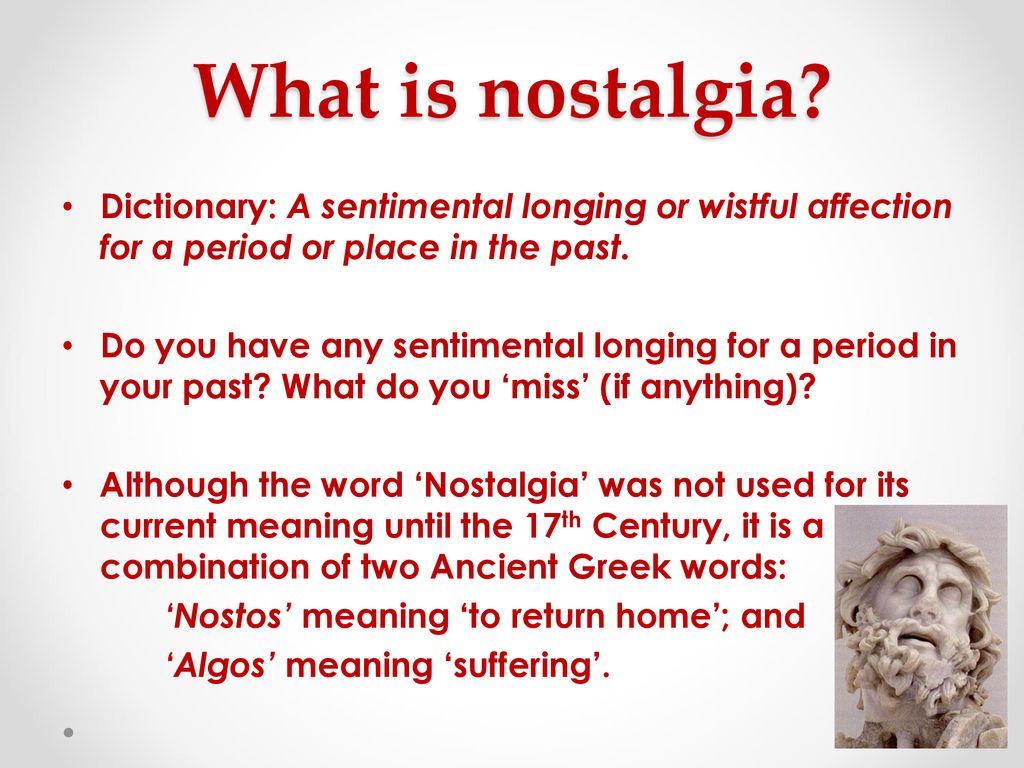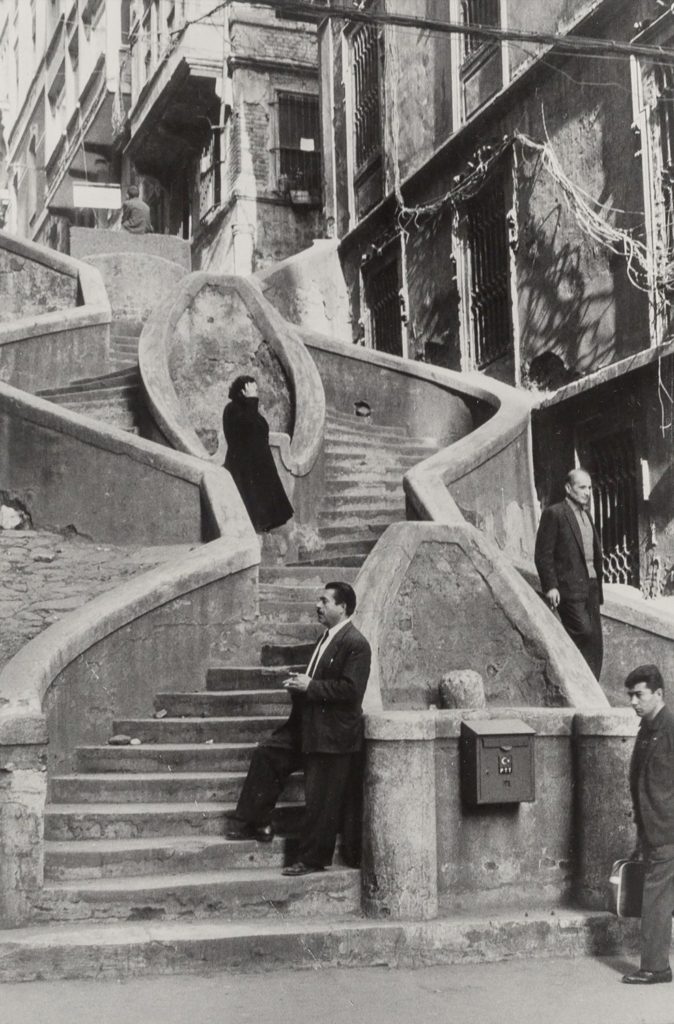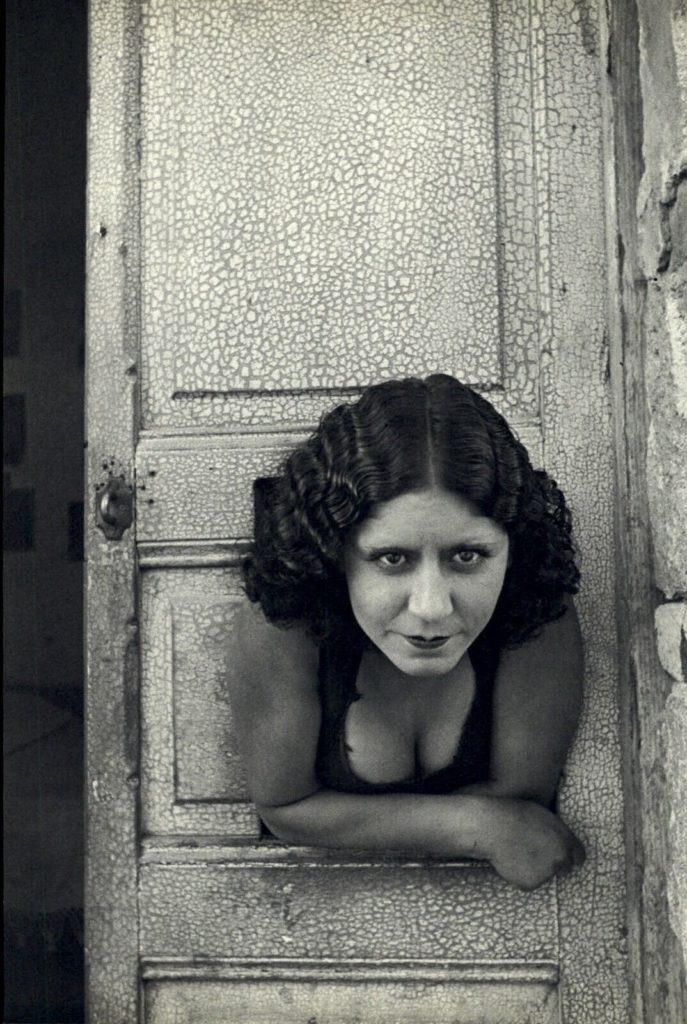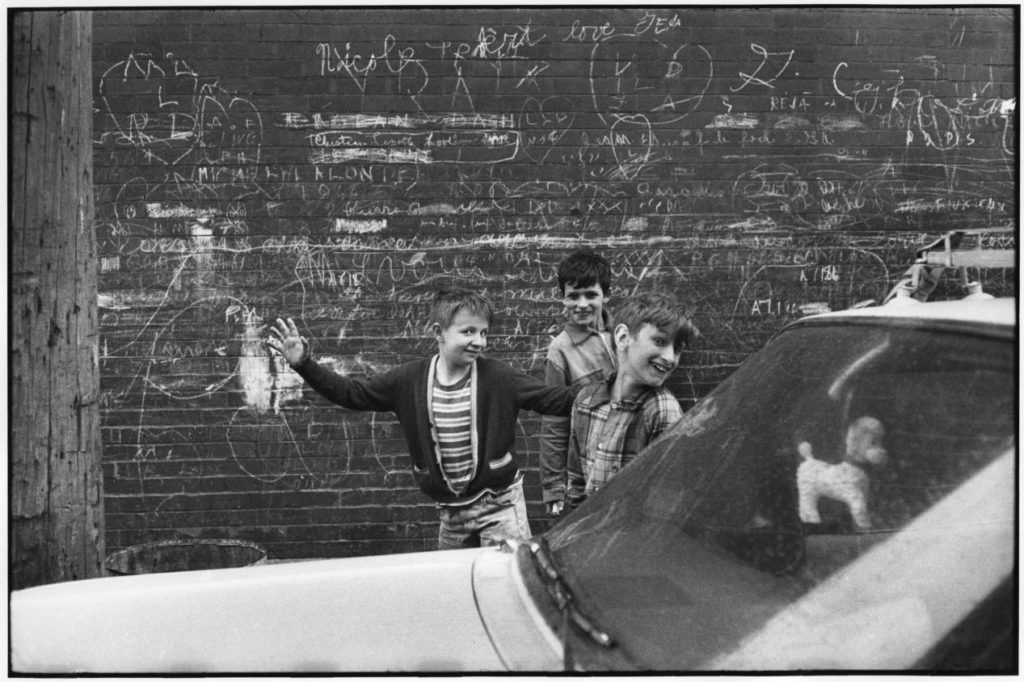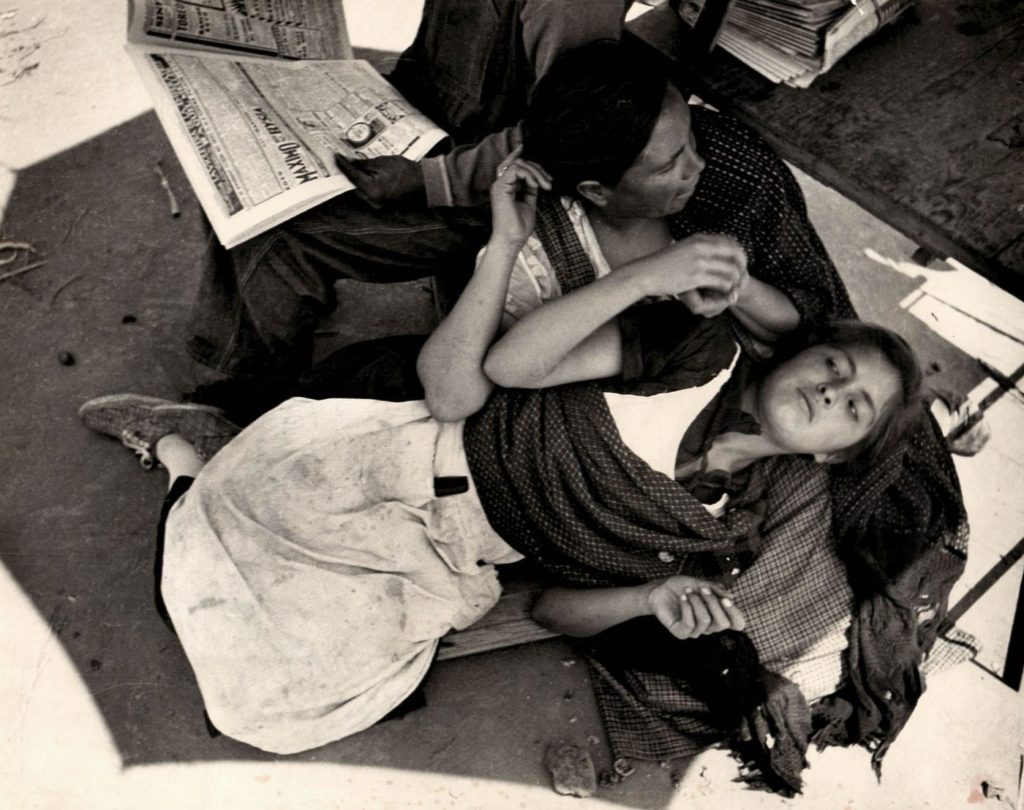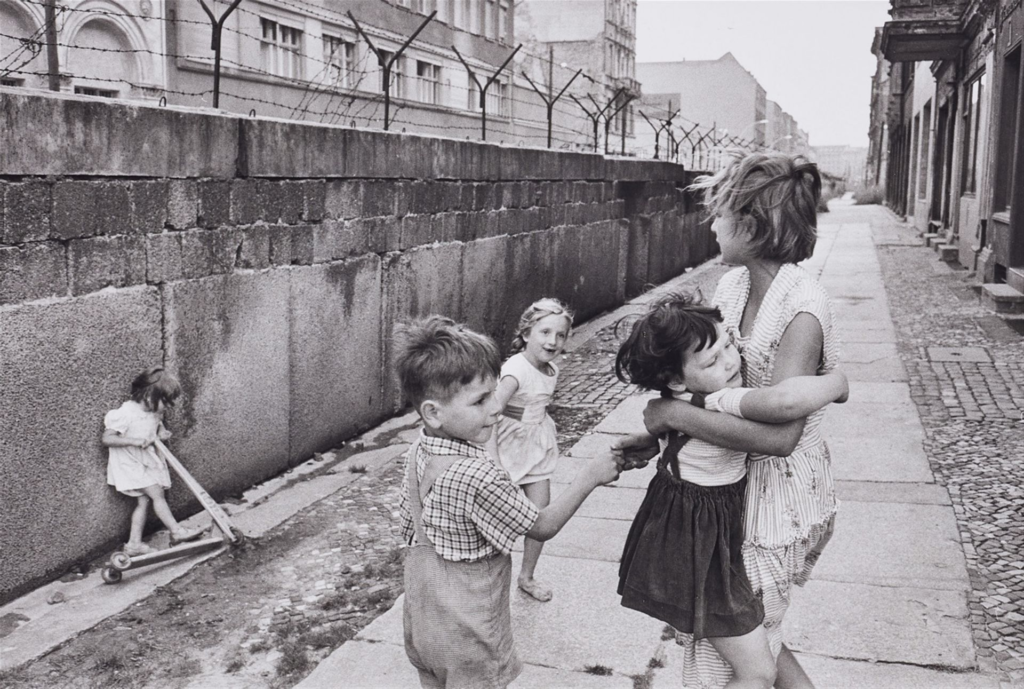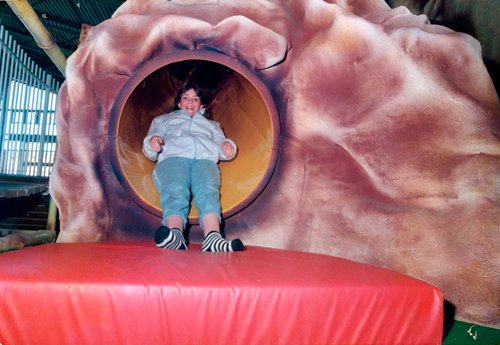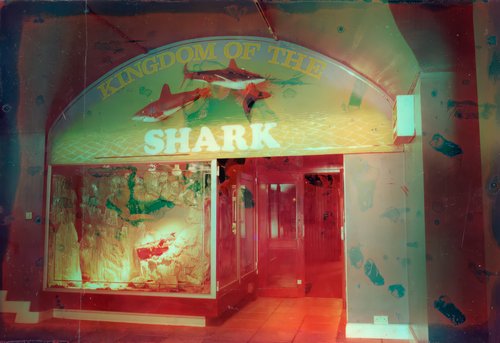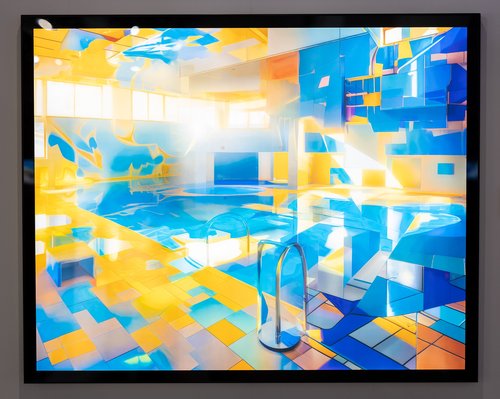
To help us understand the processes behind AI art and how we can use it for this unit, we went down to Will Lakeman’s AI art exhibition at ArtHouse Jersey (Capital House). Lakeman described his intense obsession for Fort Regent in its prime – from when he was a child – and the profound impact that it’s had on him; his goal being to recreate the way he saw the Fort through his memory, stating, “I have tried to picture things not as they were, but in the strange ways they appear in dreams and hallucinations.”
Lakeman had various messages hung in different areas on the wall describing his fascination with Fort Regent in large detail, which described his own memories and his experience with autism, that also gave brief descriptions about each section of the exhibit. I chose to scan through them to gain some extra context to the pieces, but I mainly wanted to interpret his work in my own way, as Fort Regent also played a small part in my own childhood, although not as big a part as he claims it did in his youth.


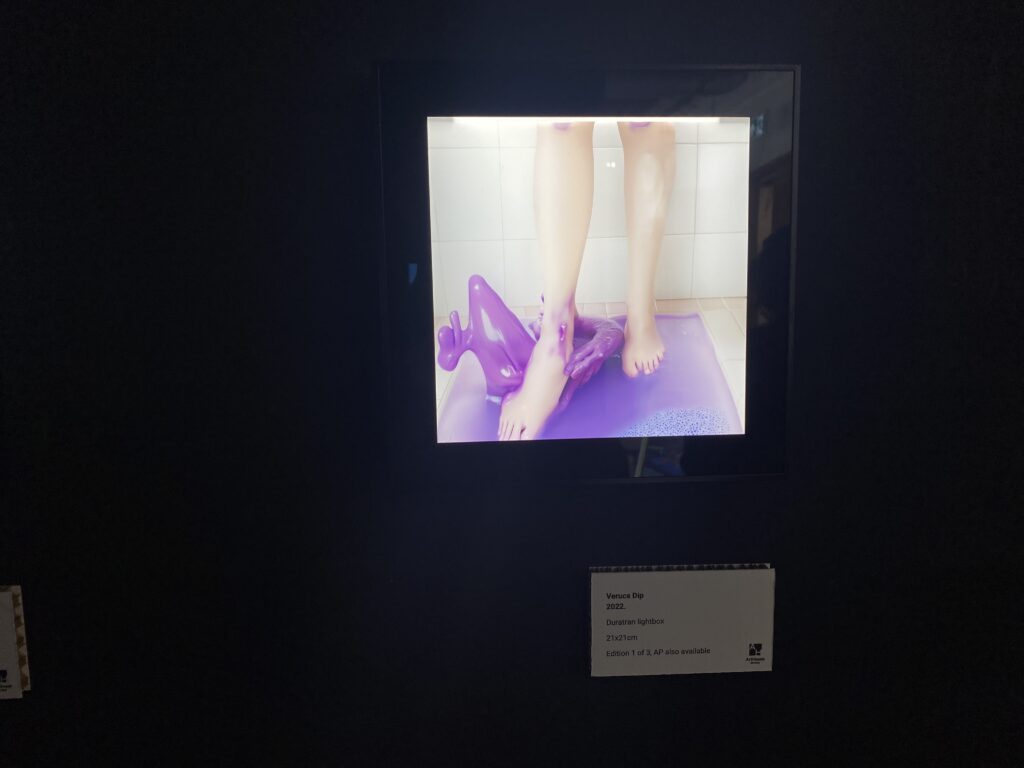
A collection of pieces were displayed in a dark room in the corner of the exhibition with backlighting behind each image to bring out the vibrancy and details. I found this section to be very dreamlike and it almost took me into a trance-like state and I was engrossed in these works. They all felt quite familiar to me, like distant memories or deja vu. There were around 10 small photographs in this area that were all completely unique in composition, colour palette, and tone.
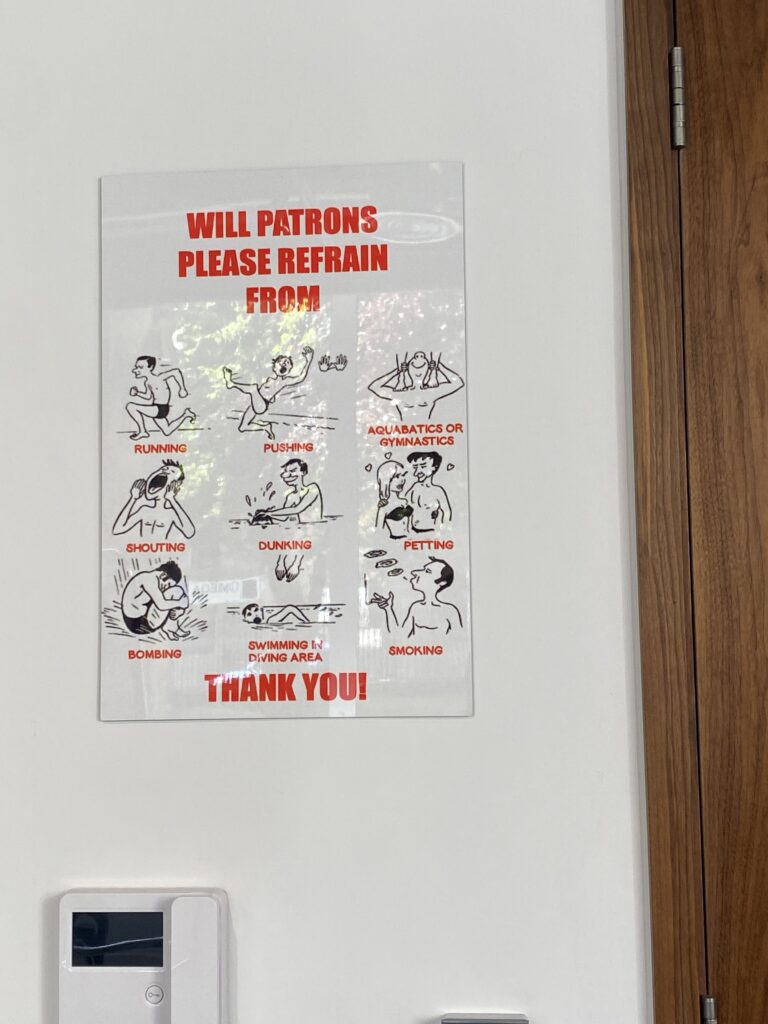
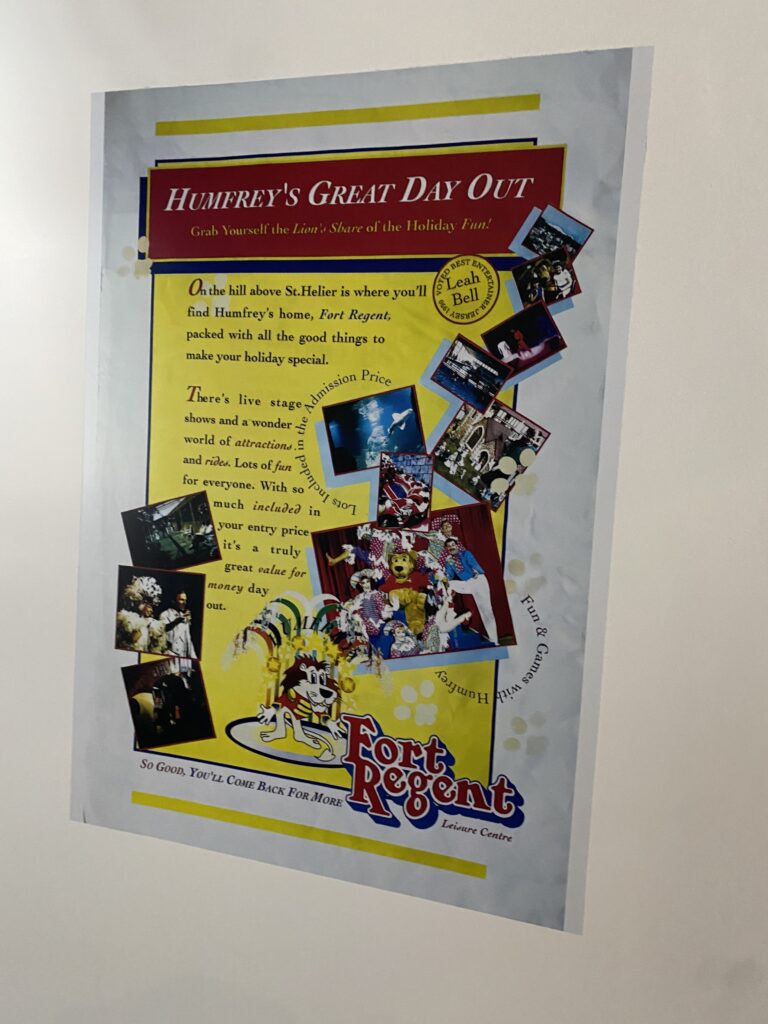
There were a few signs from the different attractions that Fort Regent had during this time period, which I assume are copies that were touched up and reprinted for this exhibition. The characters and styles these posters are presented in invoked a sense of nostalgia from my childhood, from hotel pools on holidays and tourist attraction advertisements I’ve seen around. It wasn’t as strong an attachment as I felt with some other pieces that were in this exhibition, but nonetheless I still found myself associating with it.
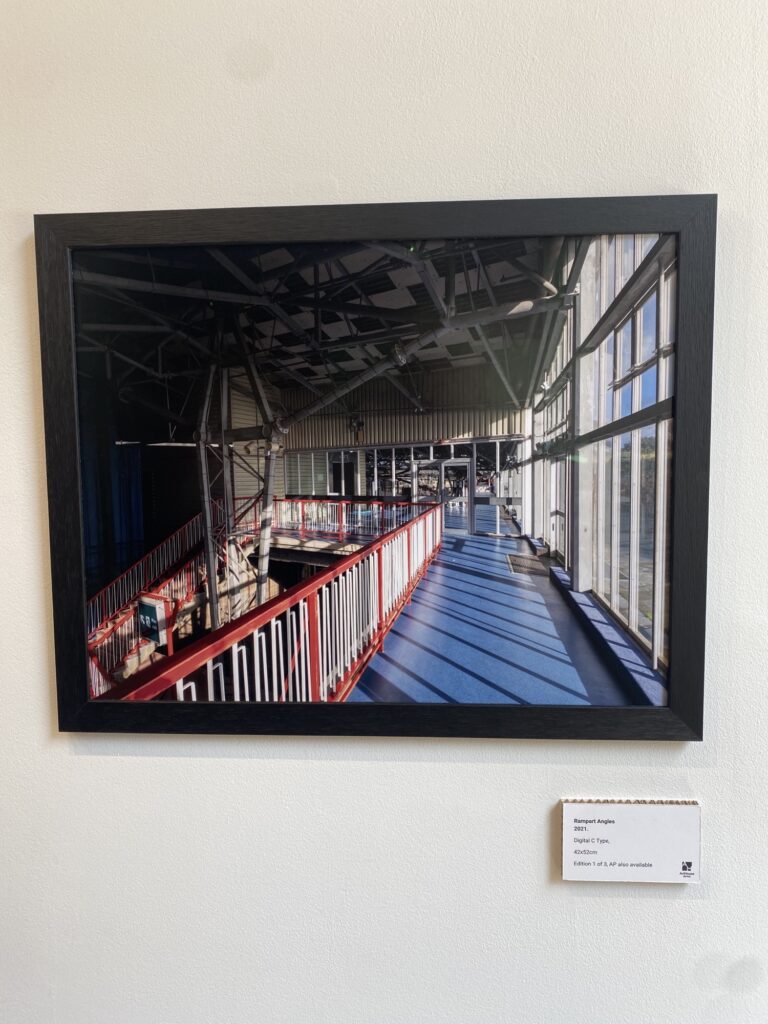
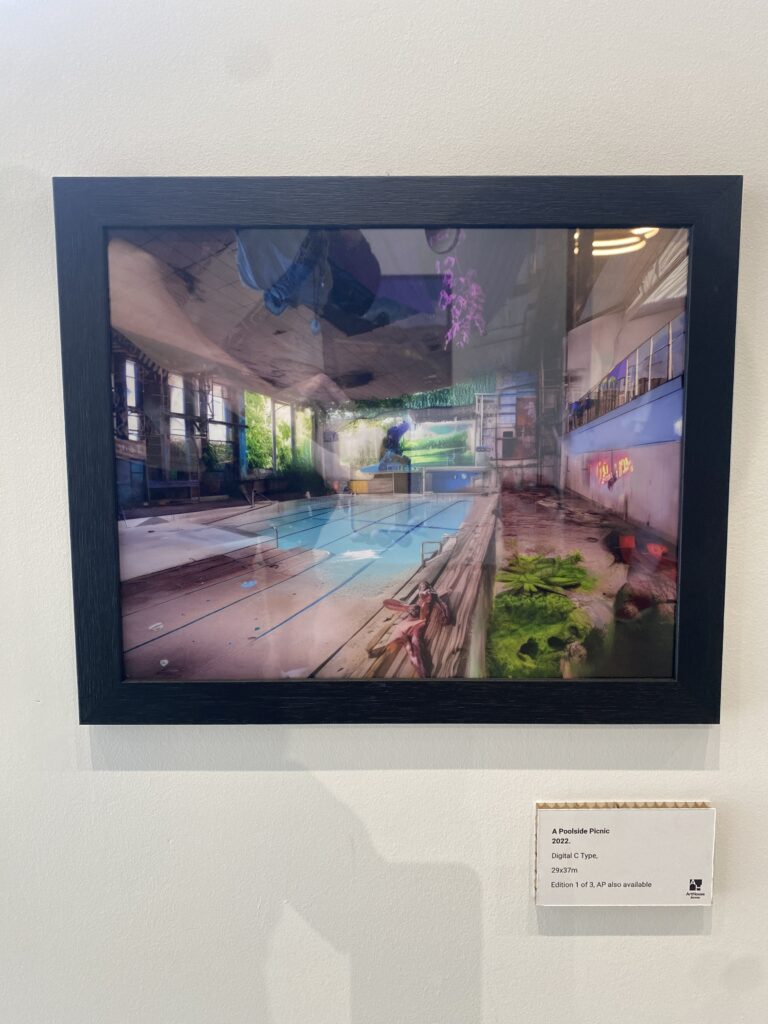
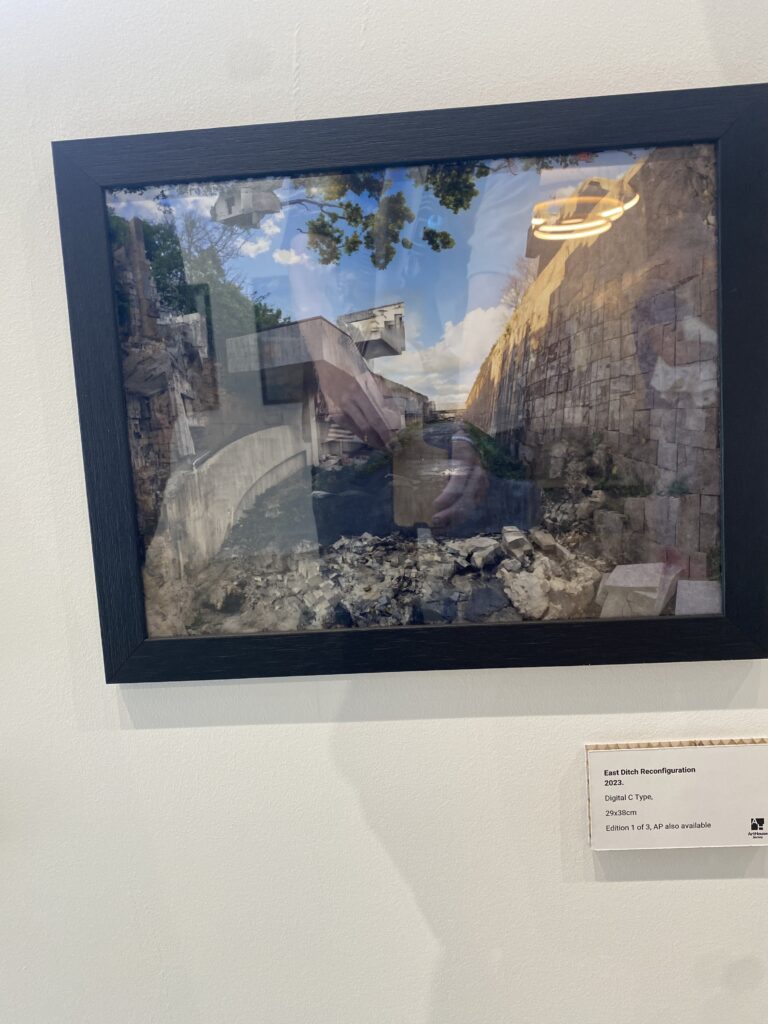
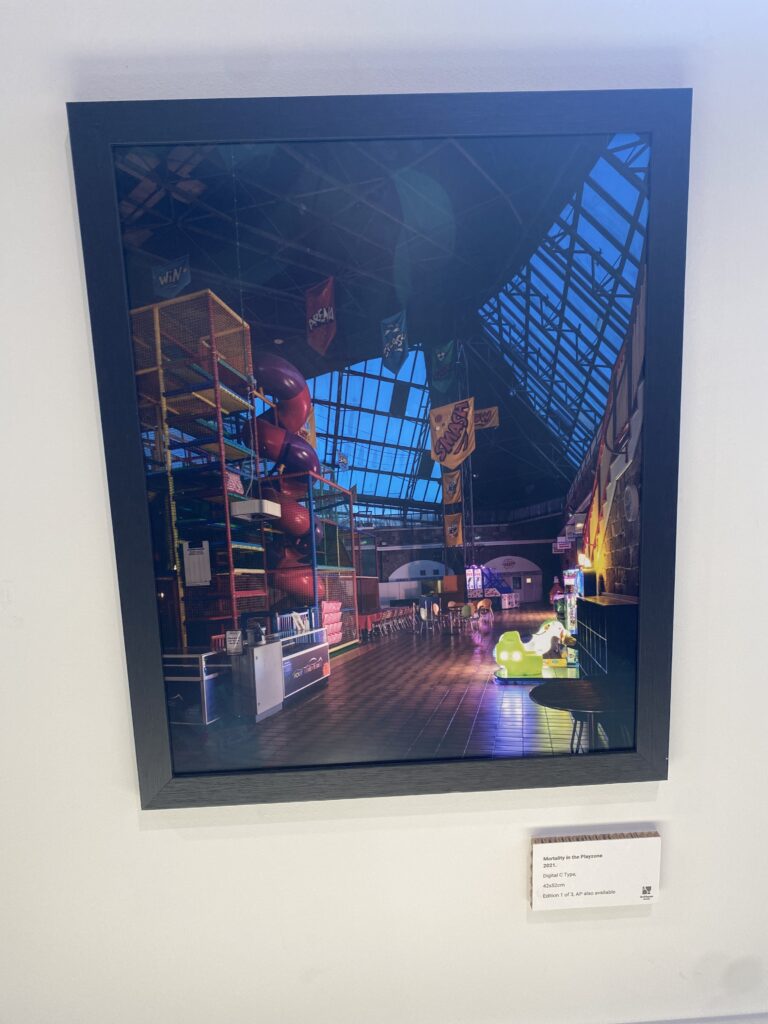
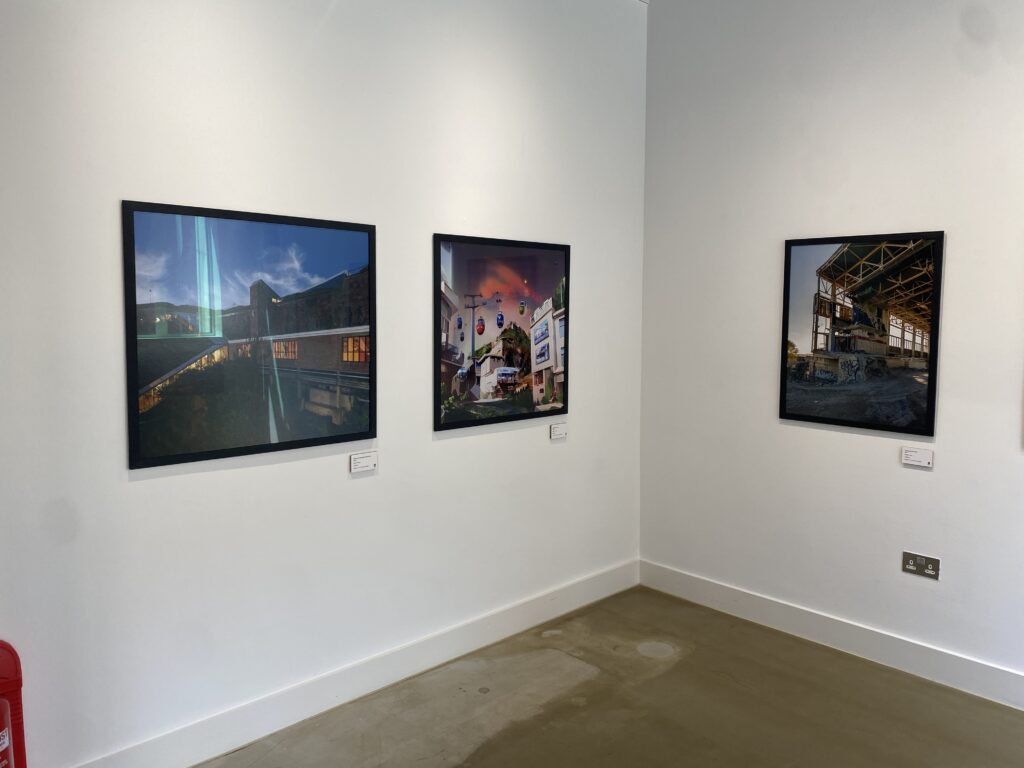
Along a large section of the walls in the exhibition were these pieces varying in sizes of different parts of the fort, such as the old pool, the indoor balcony on the upper levels and what is now (and maybe still was) the play zone for young children. I felt a strong connection with the play zone image in particular, as it was somewhere I spent a lot of my early years playing at, despite how distant and vague these memories now are. I understand the reasoning for Will Lakeman’s use of saturated colour palettes with AI to recreate these scenes because that’s how the world seems when you’re a child; a huge, colourful place to explore and learn about where everything is unique and new to you.
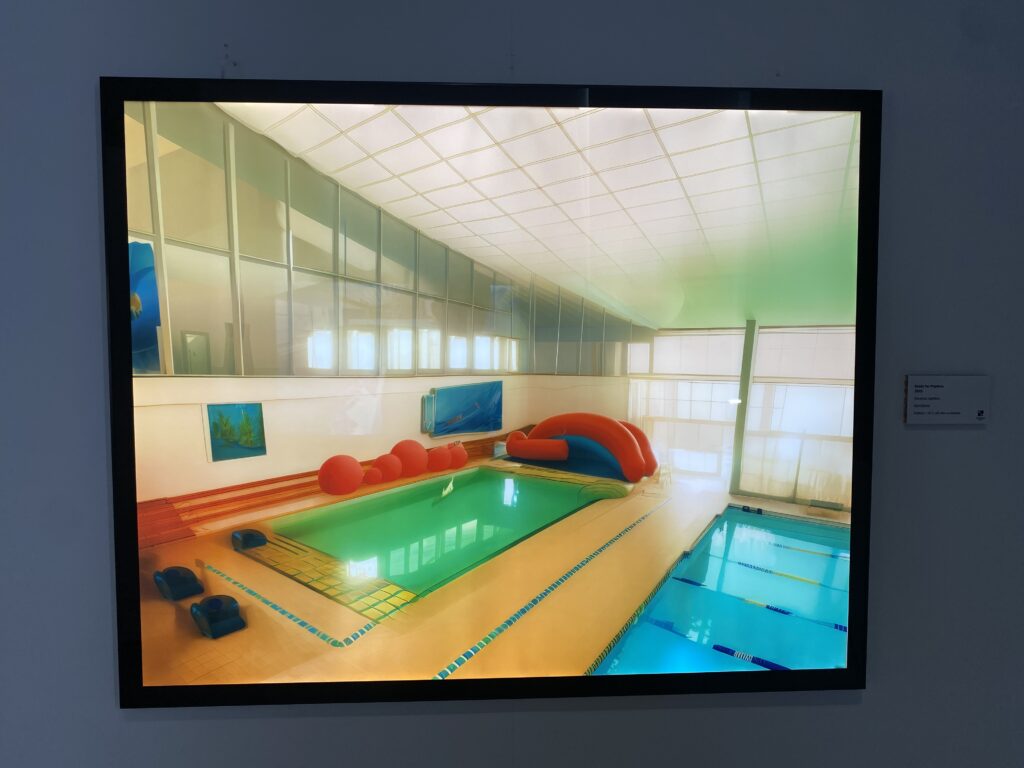

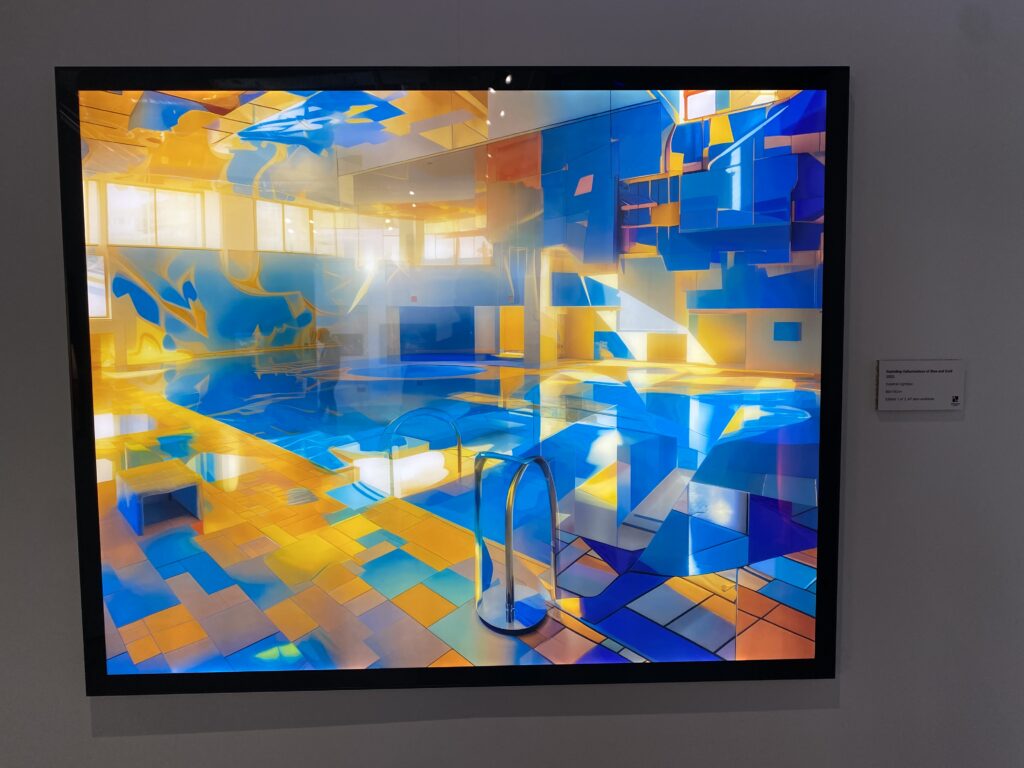
There were a few more pieces displayed with backlighting in one of the final sections of the exhibition, mostly featuring pools and gorgeous blue colour palettes. The image displayed on the left reminds me of the swimming pool at Les Ormes, the place where I first learned to swim when I was around 5 years old, another place on the island that brings back a lot of memories that I probably glamourise myself. The central piece I didn’t really feel too much association with, but like with a lot of the works in this exhibition, I oddly felt like I recognised this fabricated scene, despite the fact that it was loosely based on a real place, I find it interesting considering it’s somewhere that hasn’t been around since long before I was even born. The image on the right is somewhat similar, although I feel more like I’ve visited this place in a dream or somewhere vaguely similar in person, the only thing I can think of that slightly resembles this being the wave pool at Aquasplash.
Lakeman’s exhibit definitely plays on the concept of liminal spaces, which is something I’ve covered before, but I’ve not had as extreme an association with images surrounding the topic I’ve looked at before this. This exhibit has brought about the eerie, but nostalgic feeling of these empty places that should be full of people, but with somewhere that I genuinely feel I’ve visited before. This exhibition presents one of the most relatable experiences I’ve had looking at artwork so far, and I think AI is a perfect tool for creating art about things that are so hard to describe and put onto a canvas.



